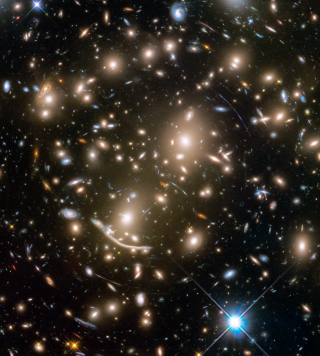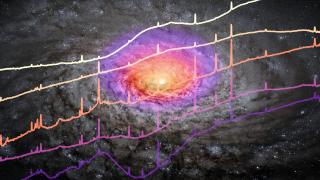Bibcode
Barrera-Ballesteros, J. K.; García-Lorenzo, B.; Falcón-Barroso, J.; van de Ven, G.; Lyubenova, M.; Wild, V.; Méndez-Abreu, J.; Sánchez, S. F.; Marquez, I.; Masegosa, J.; Monreal-Ibero, A.; Ziegler, B.; del Olmo, A.; Verdes-Montenegro, L.; García-Benito, R.; Husemann, B.; Mast, D.; Kehrig, C.; Iglesias-Paramo, J.; Marino, R. A.; Aguerri, J. A. L.; Walcher, C. J.; Vílchez, J. M.; Bomans, D. J.; Cortijo-Ferrero, C.; González Delgado, R. M.; Bland-Hawthorn, J.; McIntosh, D. H.; Bekeraitė, S.
Referencia bibliográfica
Astronomy and Astrophysics, Volume 582, id.A21, 50 pp.
Fecha de publicación:
10
2015
Revista
Número de citas
115
Número de citas referidas
110
Descripción
We present spatially resolved stellar and/or ionized gas kinematic
properties for a sample of 103 interacting galaxies, tracing all merger
stages: close companions, pairs with morphological signatures of
interaction, and coalesced merger remnants. In order to distinguish
kinematic properties caused by a merger event from those driven by
internal processes, we compare our galaxies with a control sample of 80
non-interacting galaxies. We measure for both the stellar and the
ionized gas components the major (projected) kinematic position angles
(PAkin, approaching and receding) directly from the velocity
distributions with no assumptions on the internal motions. This method
also allow us to derive the deviations of the kinematic PAs from a
straight line (δPAkin). We find that around half of the
interacting objects show morpho-kinematic PA misalignments that cannot
be found in the control sample. In particular, we observe those
misalignments in galaxies with morphological signatures of interaction.
On the other hand, thelevel of alignment between the approaching and
receding sides for both samples is similar, with most of the galaxies
displaying small misalignments. Radial deviations of the kinematic PA
orientation from a straight line in the stellar component measured by
δPAkin are large for both samples. However, for a large
fraction of interacting galaxies the ionized gas δPAkin
is larger than the typical values derived from isolated galaxies (48%),
indicating that this parameter is a good indicator to trace the impact
of interaction and mergers in the internal motions of galaxies. By
comparing the stellar and ionized gas kinematic PA, we find that 42%
(28/66) of the interacting galaxies have misalignments larger than
16°, compared to 10% from the control sample. Our results show the
impact of interactions in the motion of stellar and ionized gas as well
as the wide the variety of their spatially resolved kinematic
distributions. This study also provides a local Universe benchmark for
kinematic studies in merging galaxies at high redshift.
Appendices are available in electronic form at http://www.aanda.org
Proyectos relacionados

Evolución de Galaxias en Cúmulos
Las estructuras en el Universo, a todas las escalas de masa, se han formado de una forma jerárquica y principalmente producidas por fusiones de galaxias. Sin embargo, esta formación jerárquica de las galaxias está modulada por el entorno en el cual se crean y evolucionan. Mientras que las galaxias de campo presentan una evolución pasiva, los
Jairo
Méndez Abreu

Huellas de la Formación de las Galaxias: Poblaciones estelares, Dinámica y Morfología
Bienvenida a la página web del g rupo de investigación Traces of Galaxy Formation. Somos un grupo de investigación amplio, diverso y muy activo cuyo objetivo principal es entender la formación de galaxias en el Universo de una manera lo más completa posible. Con el estudio detellado de las poblaciones estelares como bandera, estamos constantemente
Anna
Ferré Mateu

Actividad Nuclear en Galaxias: una Perspectiva 3D del Núcleo y su Entorno
Nuestro proyecto puede dividirse en dos líneas principales de investigación. En primer lugar, el estudio de los vientos producidos por cuásares luminosos oscurecidos y del impacto que estos tienen en sus galaxias anfitrionas (retroalimentación del AGN). Para ello hemos obtenido observaciones en el óptico e infrarrojo cercano con el Gran Telescopio
Cristina
Ramos Almeida